Sewing batting to fabric is an essential aspect of making quilts, cushions, and other items with layers of fabric. Sewing batting to fabric is a fundamental skill that every sewist must learn.
However, if you’re just starting out, it can seem a bit daunting. In this blog post, we will take you through everything you need to know about how to sew batting to fabric, including the different types of batting and fabrics you can use, the necessary steps to follow, and some useful tips and tricks.
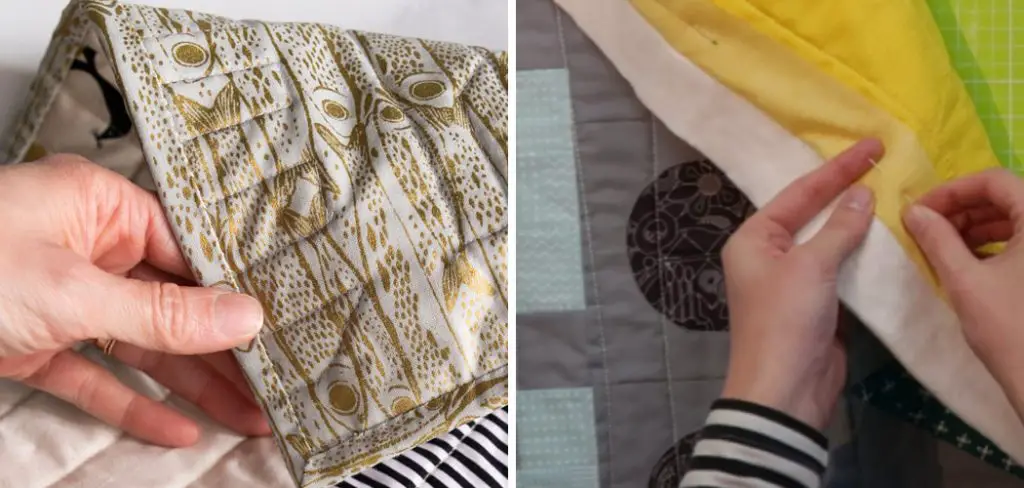
Can You Sew Batting to Fabric?
Sewing is a skill that allows people to turn fabric into something beautiful and useful. But have you ever wondered if you can sew batting to fabric? The short answer is yes, but there are a few things to remember. Batting is the fluffy layer found between the top and bottom layers of a quilt or comforter. Sewing batting to fabric can be a great way to create warmth and texture in your project.
However, it’s important to choose the right batting for your desired level of warmth and stiffness. Additionally, it can be tricky to sew batting to fabric without creating bumps or wrinkles. With practice and patience, you can successfully sew batting to fabric and create a beautiful and functional piece of art.
Why Should You Sew Batting to Fabric?
If you’re someone who loves to create their own quilts or padded blankets, you’ve probably heard about the importance of sewing batting to fabric. But why is it such an essential step in the process?
Sewing batting to fabric provides several benefits that make a significant difference in the end product. Firstly, it prevents the batting from shifting or bunching up during use, giving your finished item a smooth and professional look.
Additionally, it helps to provide insulation and warmth, keeping your loved ones cozy on chilly nights. Whether you’re a seasoned quilter or just starting out, sewing batting to fabric is a must-do step that will enhance the quality and longevity of your project.
How to Sew Batting to Fabric – A Comprehensive Guide
1. Select the Right Batting and Fabric
Before sewing your batting to the fabric, you must choose the correct ones. Although there are many batting types, the most commonly used ones are polyester, cotton, and wool.
Each batting type has its characteristics and is suitable for different projects. Cotton batting is often used for quilts, while polyester batting is popular for cushions and other soft furnishing. When selecting fabric, ensure you choose a compatible one, considering the batting weight.
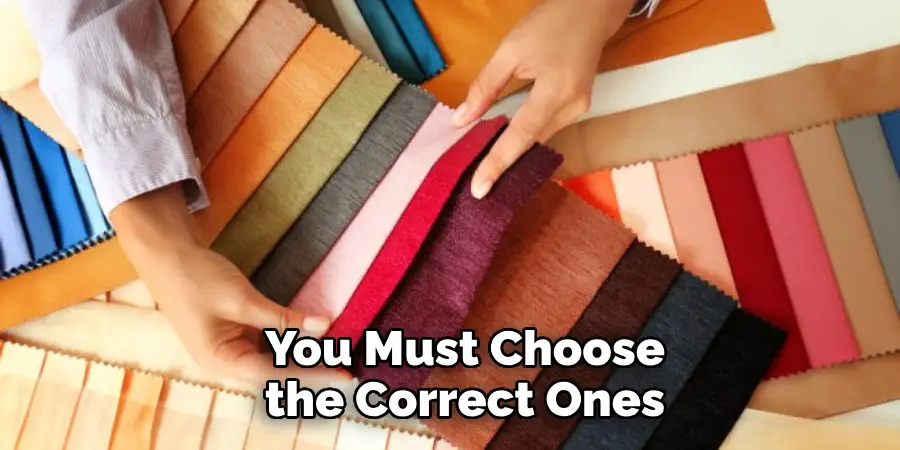
2. Choose the Right Needle
Picking the right needle ensures the batting sews to the fabric correctly. Use a needle that matches the fabric’s weight and the size of your thread. The most commonly used needle is a universal needle. However, you may choose a heavy-duty needle if working with thicker fabrics or a sharp needle for a more delicate fabric.
3. Use Suitable Stitch Length
Your stitch length must be compatible with the batting and fabric weight. The ideal stitch length is about 2.5mm to 3.5mm, though it can vary based on your needle type. Avoid long stitches, as they may leave gaps between the batting and the fabric, causing clumping or bunching.
4. Follow Proper Sitting Guidelines
Sitting guidelines vary when sewing batting to fabric. Using a walking foot or a dual feed foot is recommended for quilting as they keep all layers in place. If you don’t have these specialty feet, you can use a regular presser foot. Additionally, ensure you sew in the direction of the length and width of the batting, with the edge pinned/secured in place to avoid shifting.
5. Use the Right Type of Thread
Thread selection can make a considerable difference in the outcome of your project. For instance, cotton thread is often used for natural fiber batting, while synthetic thread is suitable for synthetic batting. It’s essential to use a sturdy thread, as sewing through all layers of the batting and fabric can be stressful on the thread. Consider using a polyester or cotton-wrapped polyester thread for the best results.
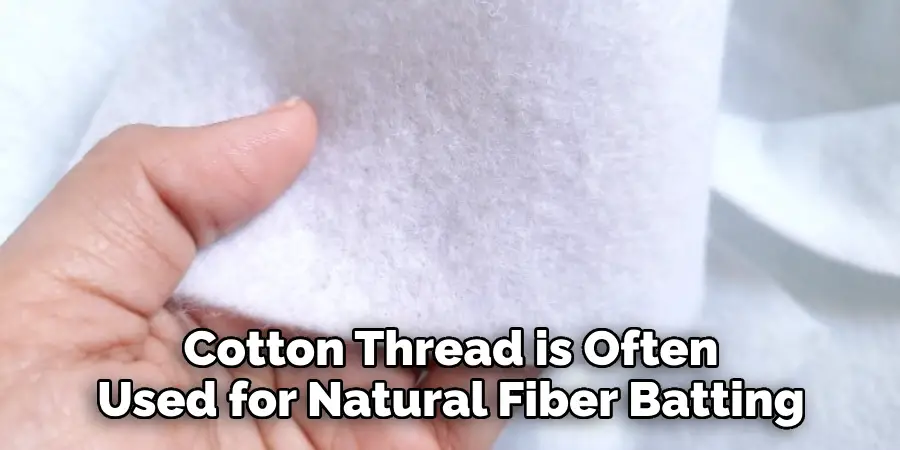
6. Pin/Baste the Edges
Before you start sewing, ensure you have pinned or basted the edges of your fabric and batting together. This step is crucial as it keeps all layers in place and reduces shifting during sewing. You can use straight pins or safety pins to secure the edges. Alternatively, you can baste the layers using a long-running stitch.
7. Practice Makes Perfect
Lastly, like any other sewing technique, practice makes it perfect for sewing batting to fabric. Don’t be discouraged if your first attempt doesn’t turn out as expected. With time and practice, you will learn the right techniques and gain confidence in your skills. Experiment with different batting and fabric types to find the perfect project combination. Remember, the more you practice, the better you will become at sewing batting to fabric.
That’s it! You’ve now learned the essential steps and tips for sewing batting to fabric. With this knowledge, you can confidently take on any project that requires sewing batting to fabric, whether it’s a quilt, cushion, or other soft furnishing items. Always remember to choose the right batting and fabric, use the correct needle and thread, and follow proper sitting guidelines for the best results.
5 Considerations Things When You Need to Sew Batting to Fabric
1. Choose the Right Batting
When sewing batting to fabric, it’s important to choose the right batting for your project. There are many different types of batting available, including cotton, polyester, wool, and bamboo. Each type of batting has its own unique properties that can affect the look and feel of your finished project. Consider factors such as thickness, loftiness, and drape when selecting a batting for your project.
2. Prepare Your Fabric
Before you begin sewing batting to fabric, it’s important to prepare both materials properly. Wash and dry your fabric according to the manufacturer’s instructions before beginning work on your project. This will help ensure that your finished product looks its best and lasts longer. Additionally, ensure any wrinkles or creases in the fabric have been ironed out before attaching the batting.
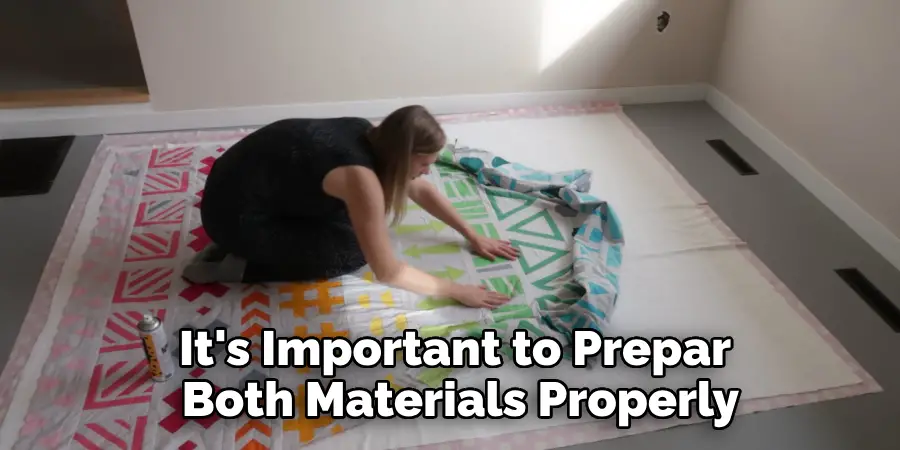
3. Use an Appropriate Needle
Using the wrong needle when sewing batting to fabric can cause problems such as skipped stitches or broken needles. A sharp needle with a larger eye is ideal for this type of project as it can easily penetrate through both layers without causing damage or creating too much friction. Additionally, use a size 90/14 needle if you’re using heavier-weight batting such as wool or bamboo; a size 80/12 should suffice for lighter-weight battings such as cotton or polyester.
4. Use Pins or Clips
When sewing two layers together, it’s important to secure them in place before beginning work on your project. Using pins or clips will help keep the layers from shifting while you sew and prevent puckering from occurring in your finished product. Ensure all pins are removed before placing the fabric under the presser foot of your machine; otherwise, they could cause damage to both the machine and the fabric!
5. Adjust Your Machine Settings
Finally, make sure that you adjust your machine settings appropriately when sewing two layers together with batting in between them. A longer stitch length (3-4 mm) is recommended when working with thicker fabrics and battings; this will help prevent skipped stitches from occurring during stitching and ensure that all layers stay securely attached throughout use! Additionally, reduce tension slightly (by one notch) if necessary; this will help prevent puckering from occurring in your finished product.
5 Benefits of Sew Batting to Fabric
1. Improved Durability
One of the primary benefits of sewing batting to fabric is that it can improve the fabric’s durability. Batting helps to provide an additional layer of protection between the fabric and any external elements, such as dirt, dust, or moisture. This additional layer helps to prevent damage to the fabric and improves its overall lifespan.
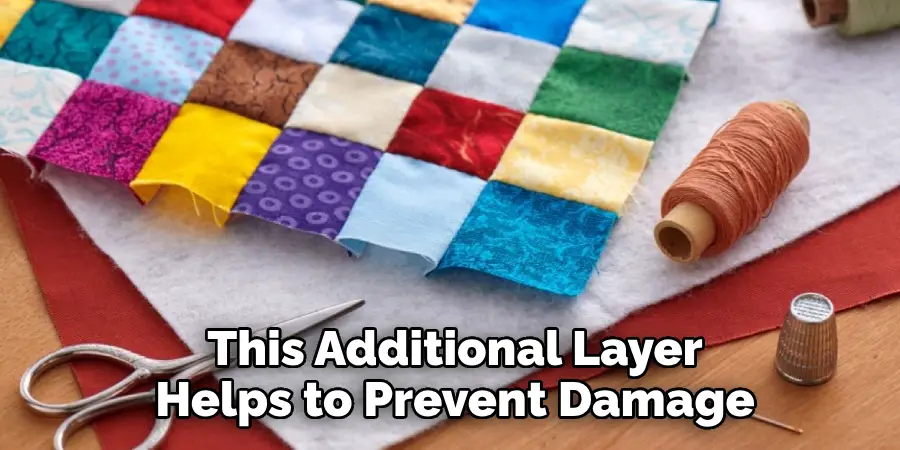
2. Enhanced Comfort
Sewing batting to fabric can also enhance the comfort of the material. Batting is made from soft materials such as cotton, wool, or polyester, which help to make fabrics more comfortable when worn against the skin. The extra padding provided by batting also helps to reduce chafing and irritation caused by friction between clothing and skin.
3. Increased Insulation
Batting can also be used to increase insulation in fabrics. Batting is a great way to trap air in fabrics, which helps to keep them warm in cold weather and cool in hot weather. This makes it ideal for use in winter jackets, sleeping bags, and other items that require insulation from extreme temperatures.
4. Reduced Noise Levels
Sewing batting to fabric can also help reduce noise levels when using certain fabrics such as velvet or corduroy. The extra padding provided by batting helps absorb sound waves, which reduces their intensity before they reach our ears. This makes it a great option for people who are sensitive to loud noises or want their home décor fabrics to be quieter than usual.
5. Improved Aesthetics
Finally, sewing batting to fabric can also improve its aesthetics by adding texture and volume. The added thickness of batting can give fabrics a more luxurious look and feel while also helping them stand out from other materials with similar colors or patterns.
3 Common Mistakes People Make When Trying to Sew Batting to Fabric
1. Not Pre-washing the Fabric
One of the most common mistakes people make when trying to sew batting to fabric is not pre-washing the fabric. Most fabrics will shrink when they are washed, and if you don’t pre-wash your fabric before sewing it together with batting, you may end up with a finished product that is smaller than expected. It’s always best to pre-wash your fabric to avoid any surprises down the line.

2. Not Using Enough Pins
Another mistake people often make when trying to sew batting to fabric is not using enough pins. Pinning the layers together helps keep them in place while you sew, which makes it easier to get even stitches and a neat finish. Make sure to use plenty of pins as you go along so that all of the layers stay in place while you work.
3. Not Using a Walking Foot
Finally, many people make the mistake of not using a walking foot when sewing batting to fabric. A walking foot helps feed both layers of fabric evenly through the machine, which makes it much easier to get even stitches and a neat finish. If you don’t have a walking foot for your sewing machine, consider purchasing one before attempting this project – it will make your life much easier!
Conclusion
Sewing batting to fabric can seem complex, making many new sewers nervous. However, following the correct procedures and essential guidelines can simplify the process. In summary, pick the right batting and fabric, choose a suitable needle and stitch length, follow proper sewing guidelines, and use the appropriate thread.
We hope this guide has been helpful to you and that your future projects are stress-free when sewing batting to fabric. Thanks for reading our post about how to sew batting to fabric.

